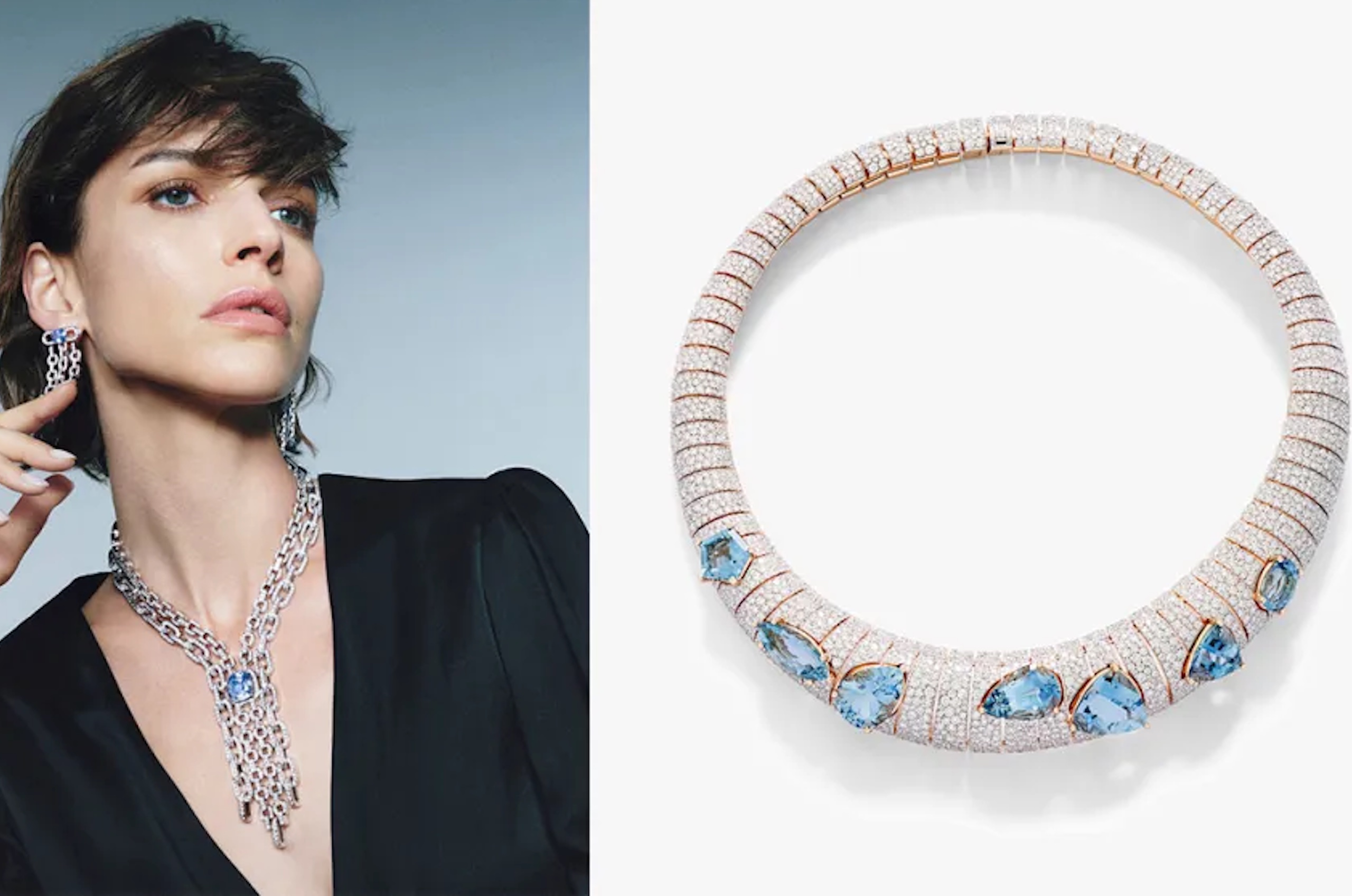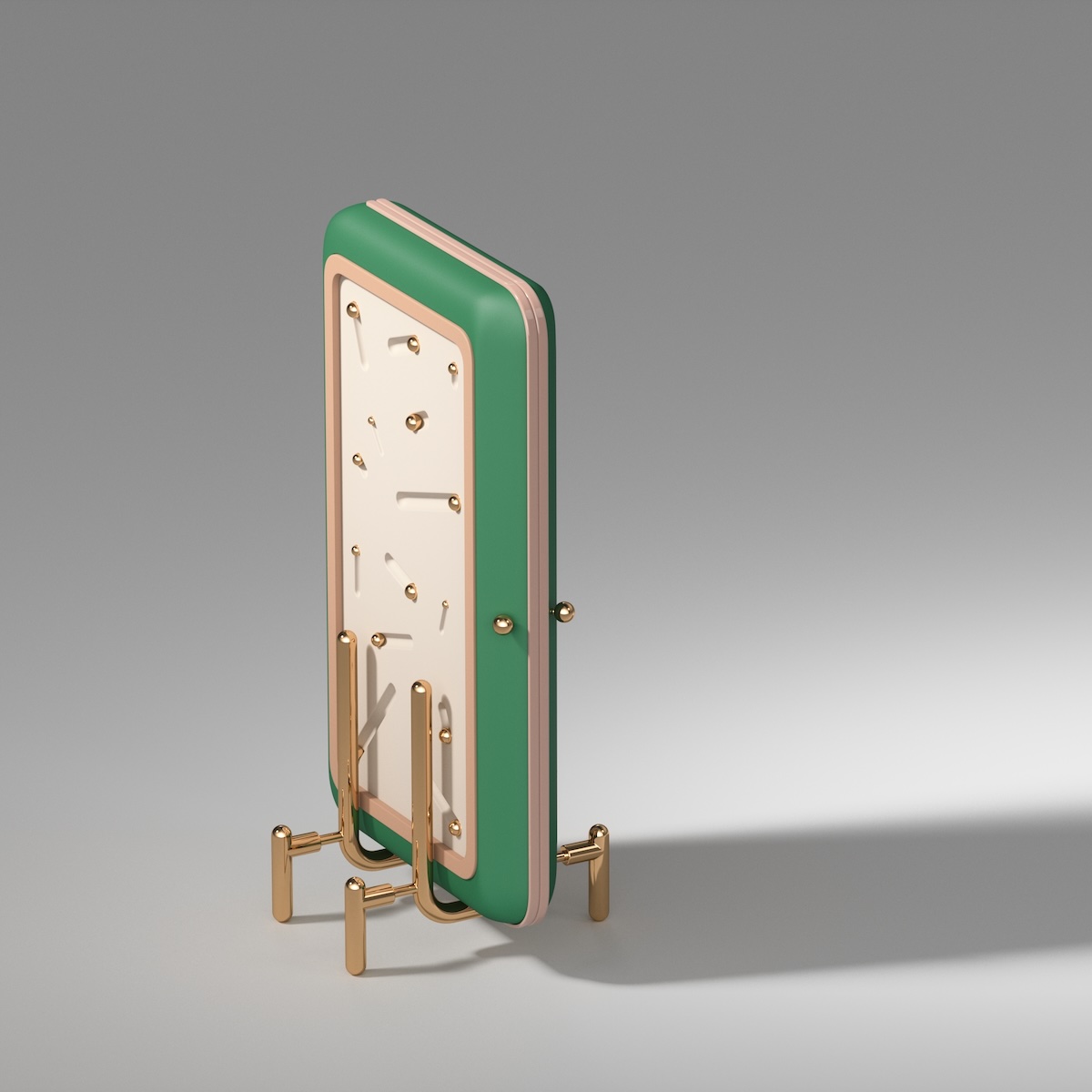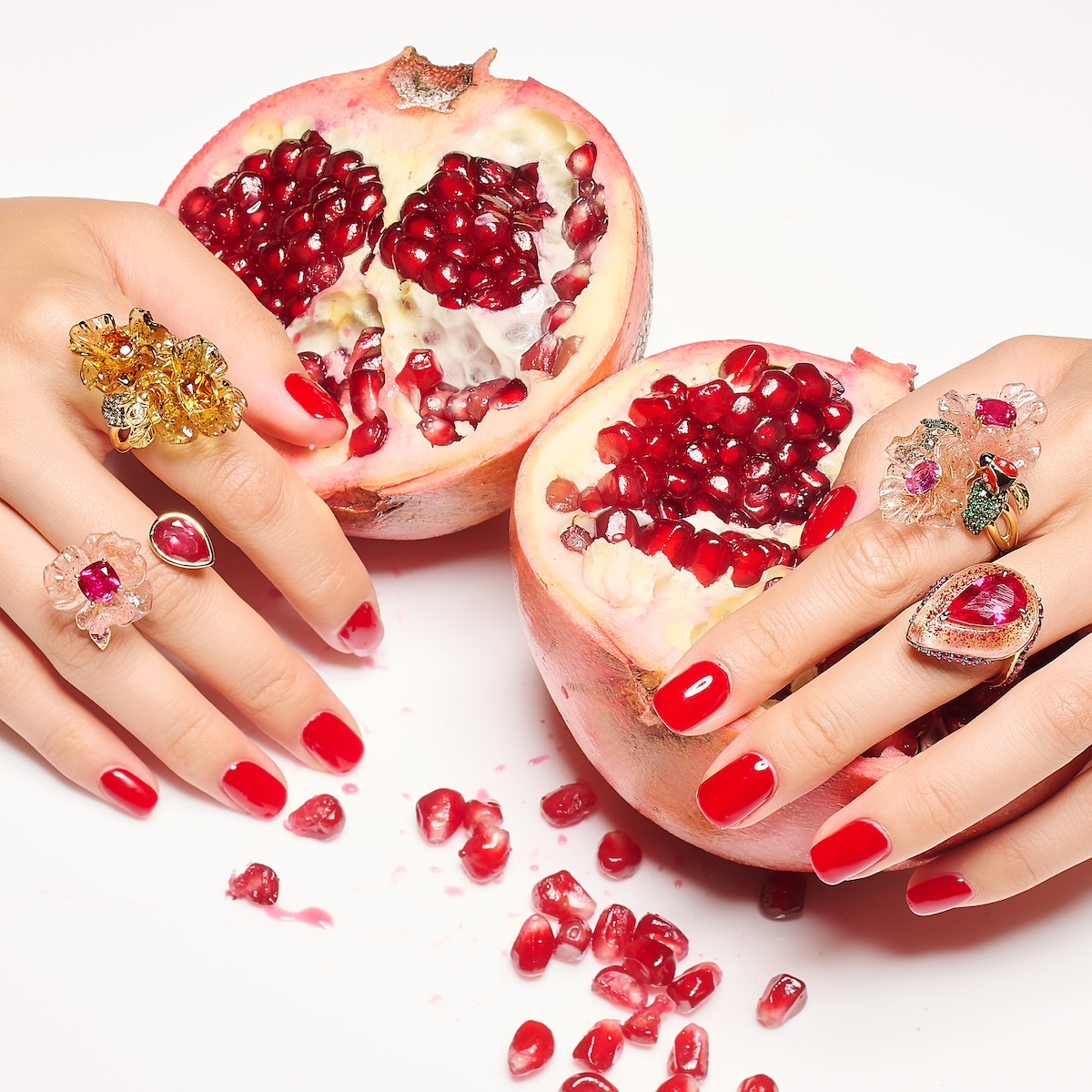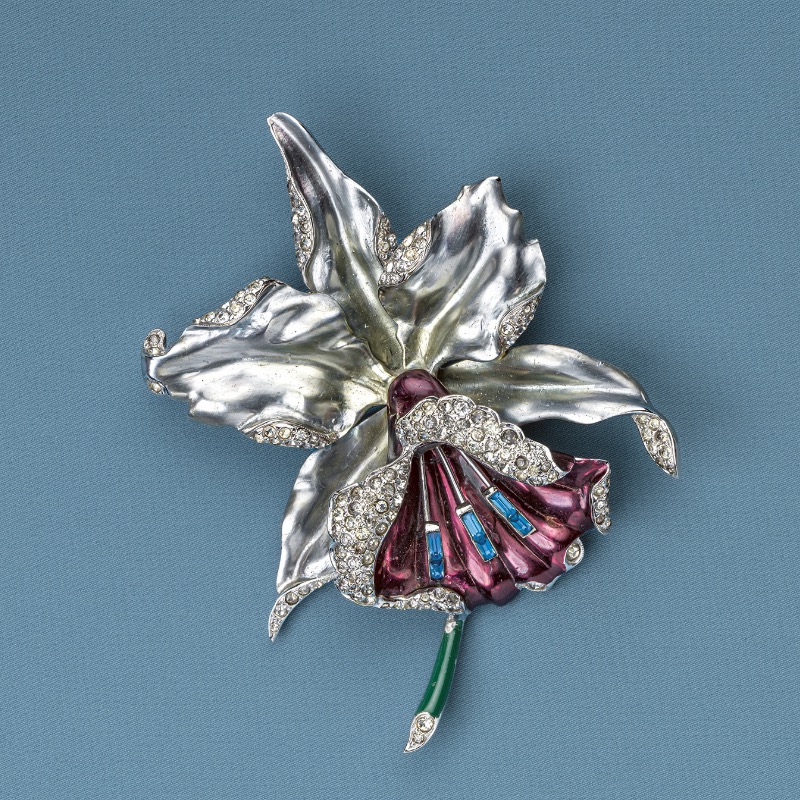Sitting at Pomellato’s Milan headquarters in front of three panels of mood boards detailing many of the brand’s greatest hits from chains in the 1970s to intricate collars in the 1980s and burst of coloured cabochon stones in the 1990s, Vincenzo Castaldo, the company’s creative director, and Stefano Cortecci, Pomellato’s gem master and director of the stone department, have an easy back-and-forth rapport when speaking about the brand. The latest high-jewellery collection, Collezione 1967 (named after the founding of the house), highlights those decades in three chapters of stunning creations. Their symbiosis reflects the strong relationship they’ve built over roughly two decades and counting of working together.
Both came to the brand with a certain passion. Cortecci’s father had been a geochemist and he followed by becoming both a geologist and gemologist and has worked with various labs from Bangkok and Tokyo to Vicenza before landing at Pomellato. Castaldo’s early career was in fashion at Romeo Gigli and Dolce & Gabbana, but he says he always had his eye on the Italian jeweller, admiring the creativity from afar before he was enlisted to spearhead the its design. “I couldn’t be a leader in this project if I wasn’t so close to this aesthetic choices that the brand did right last three decades,” Castaldo tells Robb Report. “That’s why we decided, with this collection, to celebrate 1970s, 1980s, and 1990s. They were three decades that were fundamental for the brand.”
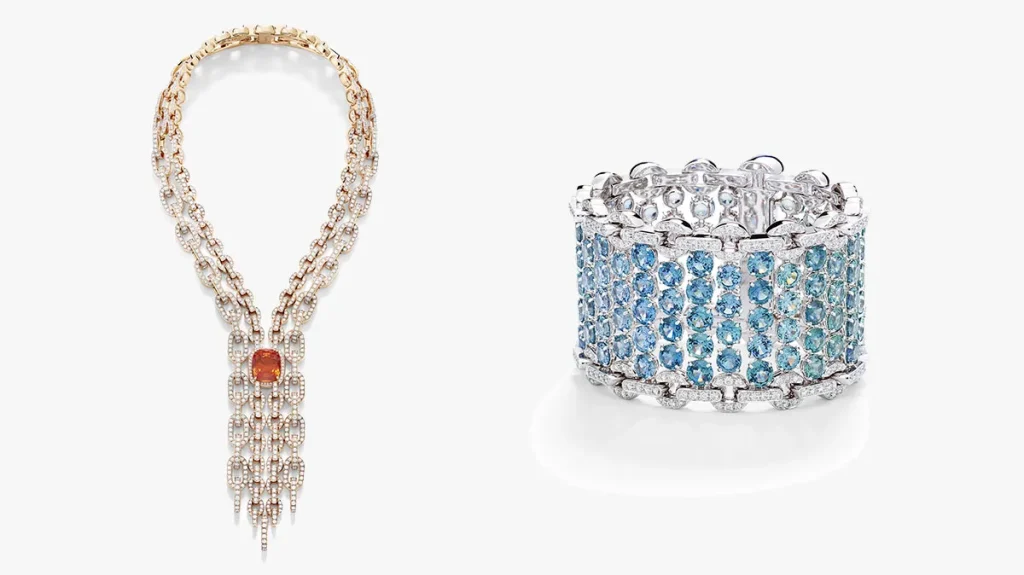
Image courtesy of Pomellato
Each chapter is led by a motif that took hold during the decade to establish the Pomellato codes. In the 1970s the company was known for its intricate and impactful chains. Some of the highlights honouring the era include an 18-carat rose gold and diamond belt that transforms into a bracelet or pendant necklace. A pair of Cascade necklaces, which Castaldo says are his favourite, feature a dual-chain construction—one inner piece with round links set within a larger version with oval links. It’s not hard to see that these were extraordinarily challenging to make. One comes in 18-carat white gold and diamonds with a 22.23-carat Ceylon sapphire at its heart and another comes in 18-carat rose gold and diamonds with a 22.58-carat Mandarin garnet at the centre. “The Mandarin garnet has been the best investment for the last five years,” says Cortecci. “It’s 10 times more compared to what we purchased five years ago.” He adds that one of his favourite pieces is also in this chapter—the Green Waves bracelet set with 122 sapphires in various shades of blue and green with an ombré effect so nuanced and sophisticated you might not immediately pick it up. “We spent a lot of time sorting the singe stones,” says Cortecci. “Its very difficult to find the subtlety of shade and matching size.”
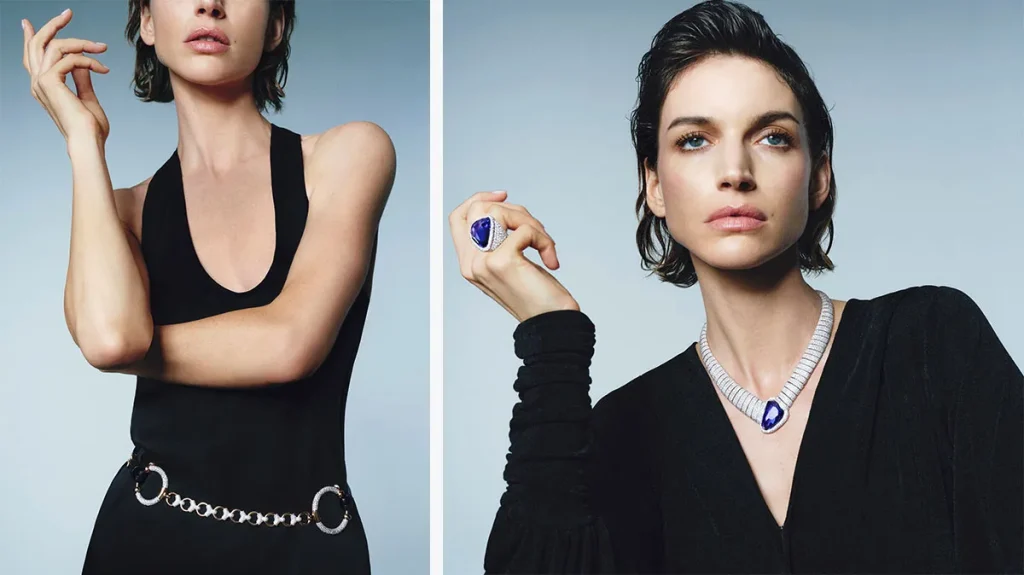
Image courtesy of Pomellato
Sometimes it’s designs like the bracelet or Cascade necklaces that informs the stones Cortecci searches for and other times the stone directs the creation. Such was the case for a drop-dead gorgeous 55.96-carat Tanzanite in an unusual irregular-cut and deeply rich hue where the 78 modules of pavé-set diamonds of the necklace necklace and the cradle for the stone had to be designed to highlight the unusual shape of the stone. “Most of the time, we are not looking for traditional cuts,” says Castaldo. That can mean anything from unusual cuts to stones acquired for imperfection rather than perfection such as the 27.83-carat Paraíba tourmaline with an interesting pattern of inclusions on the Chain Drop necklace. Often times, as in the case of the Tanzanite, the stone might be cut even more—predominately in Idar-Oberstein, Germany, a town known for its expert gem cutting—to capture the right amount of edge. “We are not Place Vendôme!” says Castaldo with a laugh.
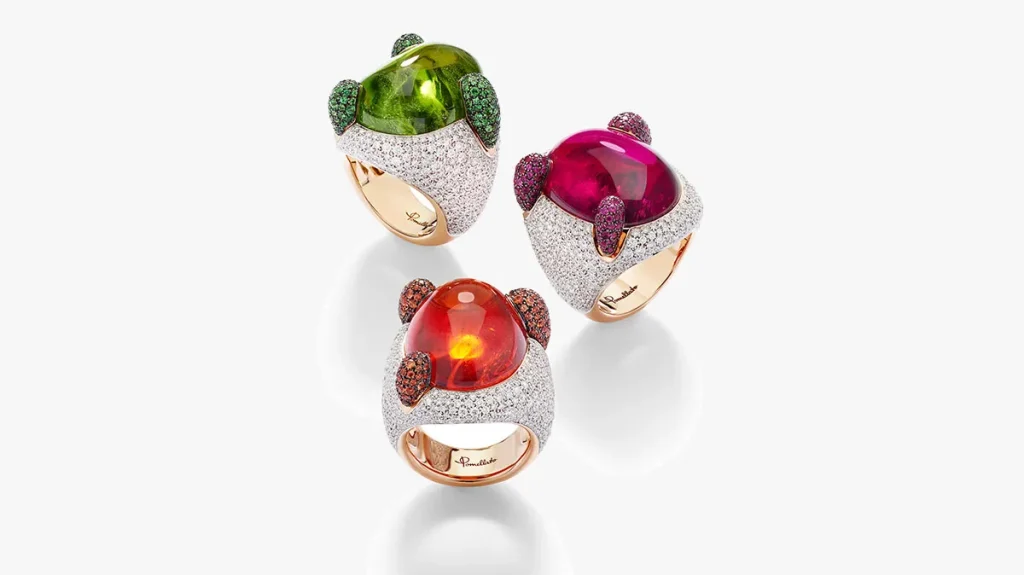
Image courtesy of Pomellato
Indeed, the company is all about fun with a dash of edgy coolness that serves to highlight important elements without overpowering them. Take, for instance, a trio of rings inspired by 1990s-era Pomellato with sizeable cabochons in peridot, Mandarin garnet, and rubellite set atop white diamonds on 18-carat rose gold bands that are held in place by claw-like prongs with pavé gems such as tsavorites, orange-treated sapphires, and rubies to match.
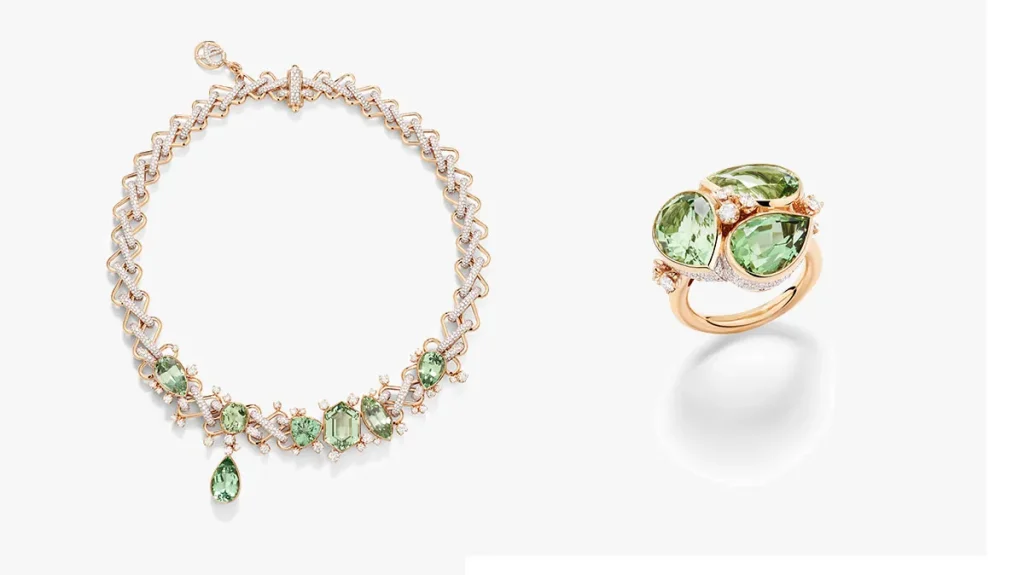
Image courtesy of Pomellato
Pomellato is, relatively speaking, a young house—especially in the world of high jewellery, which it officially entered in 2020. But the timing of this retrospective feels pitch-perfect. The 1970s, 1980s, and 1990s are all enjoying a revival across fashion, watches, and even furniture design. For Pomellato, those decades weren’t just chapters—they were the blueprint. Each era saw the brand define codes so distinctive they still resonate today. Revisiting them now through the lens of high jewellery is only natural. After all, in the world of luxury, evolution often looks like incremental reinvention—a recipe for staying power that has nearly alway proved successful for some of the world’s top luxury brands.
Click here to see more images of the Collezione 1967 collection.





